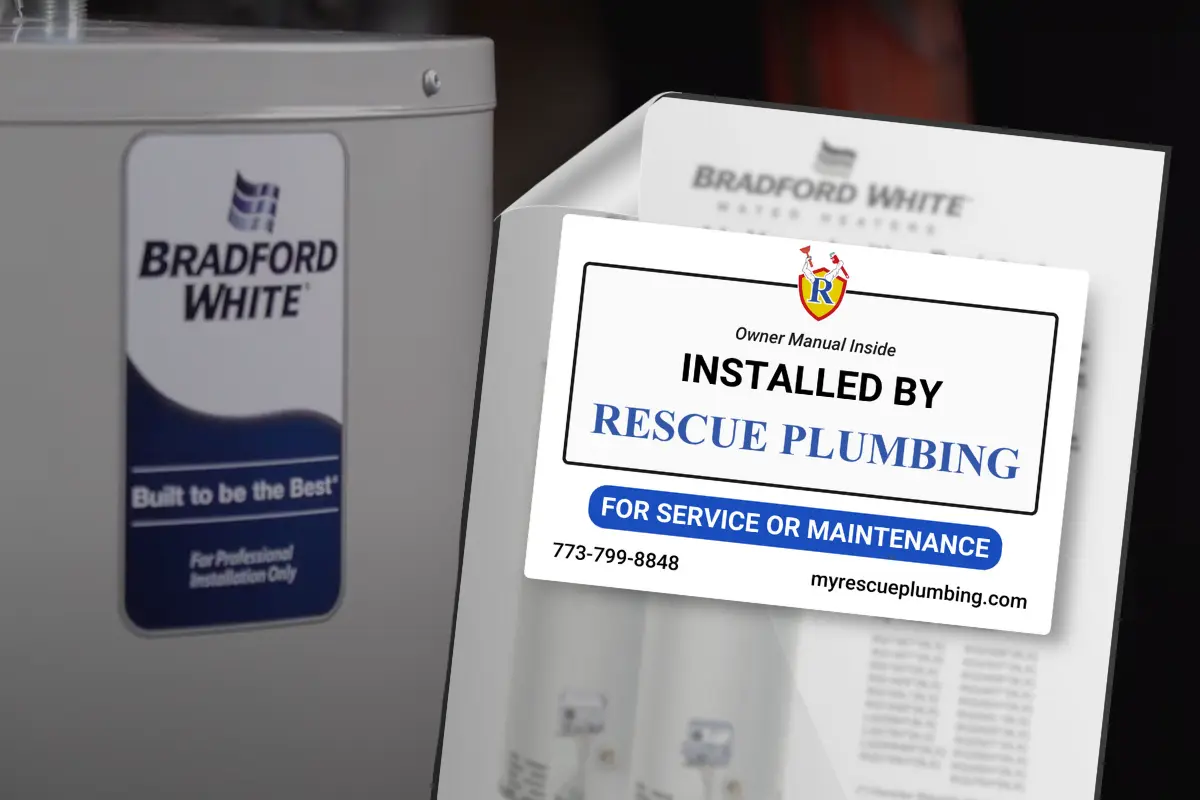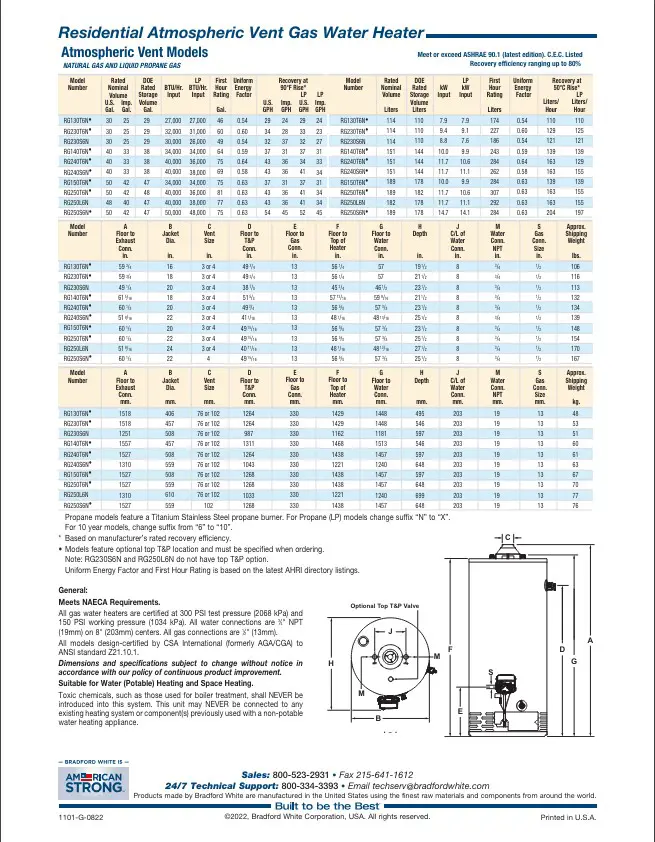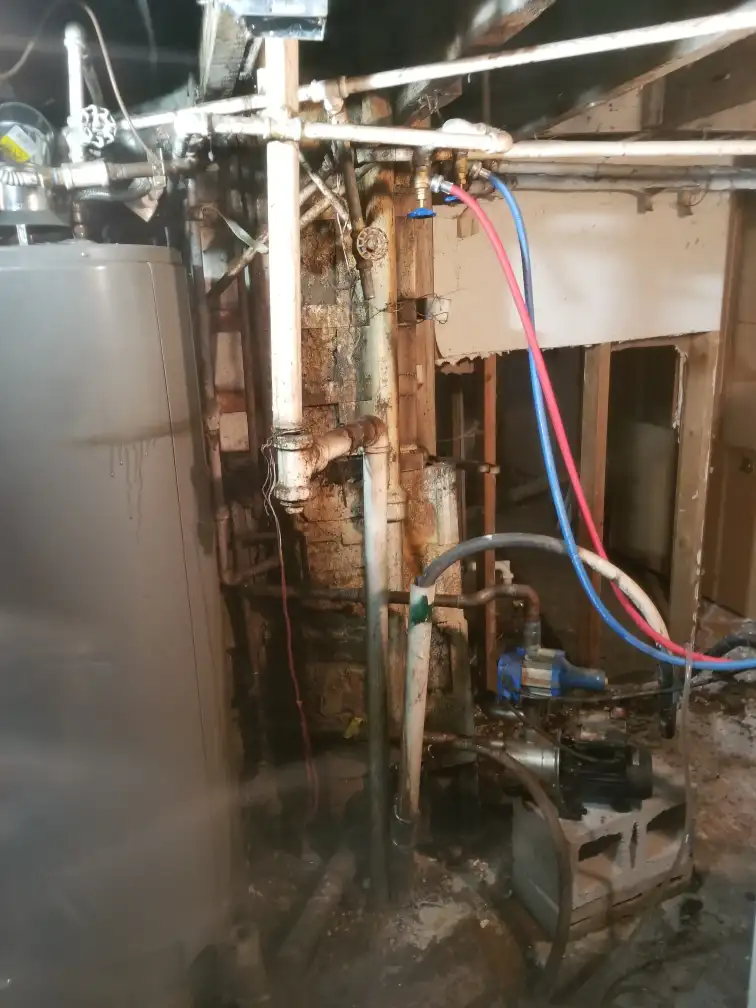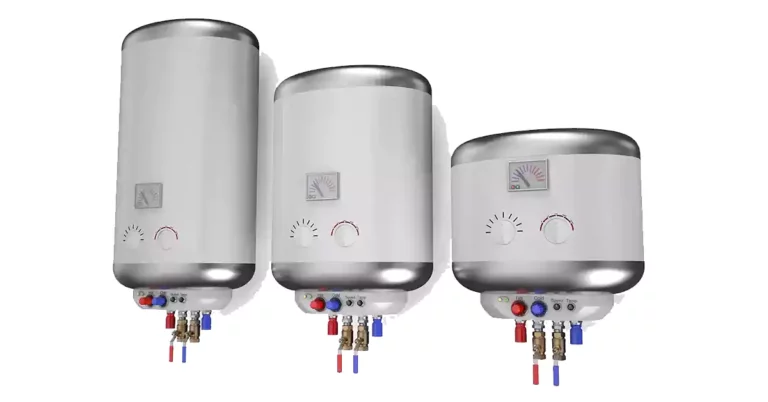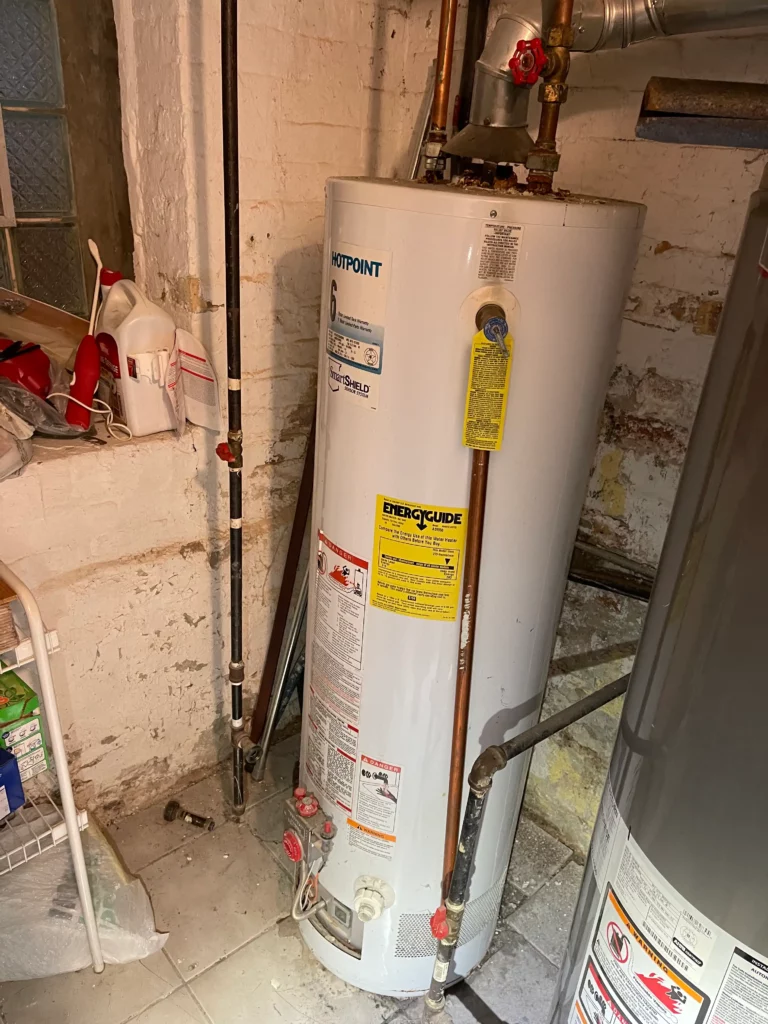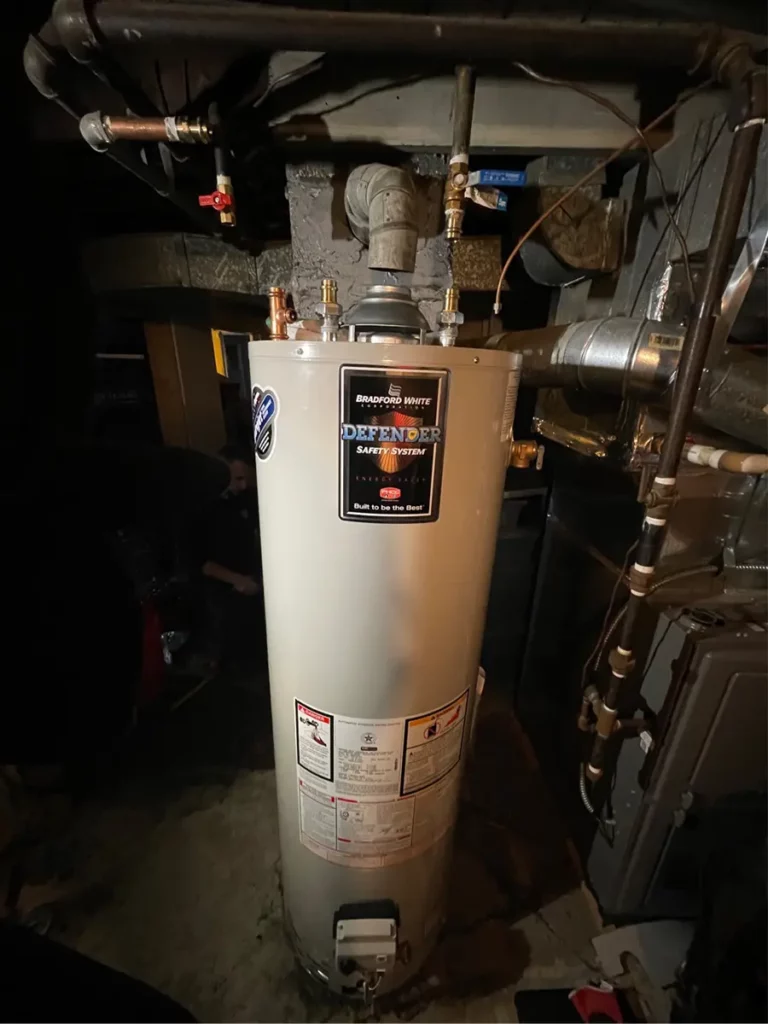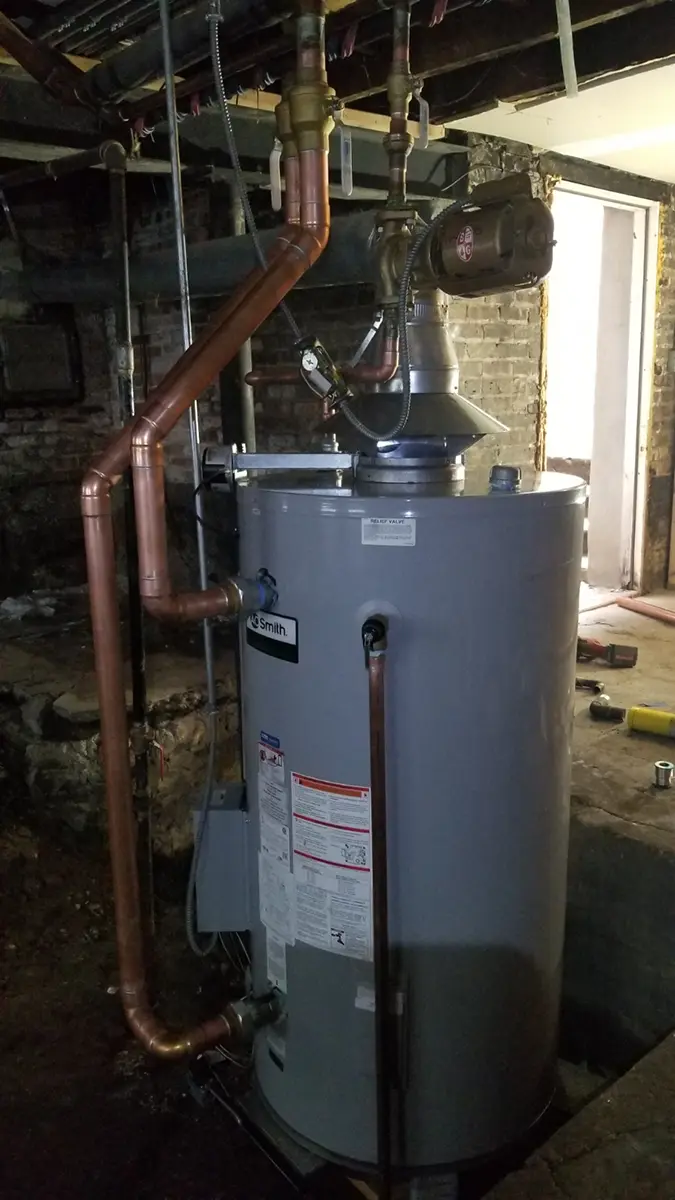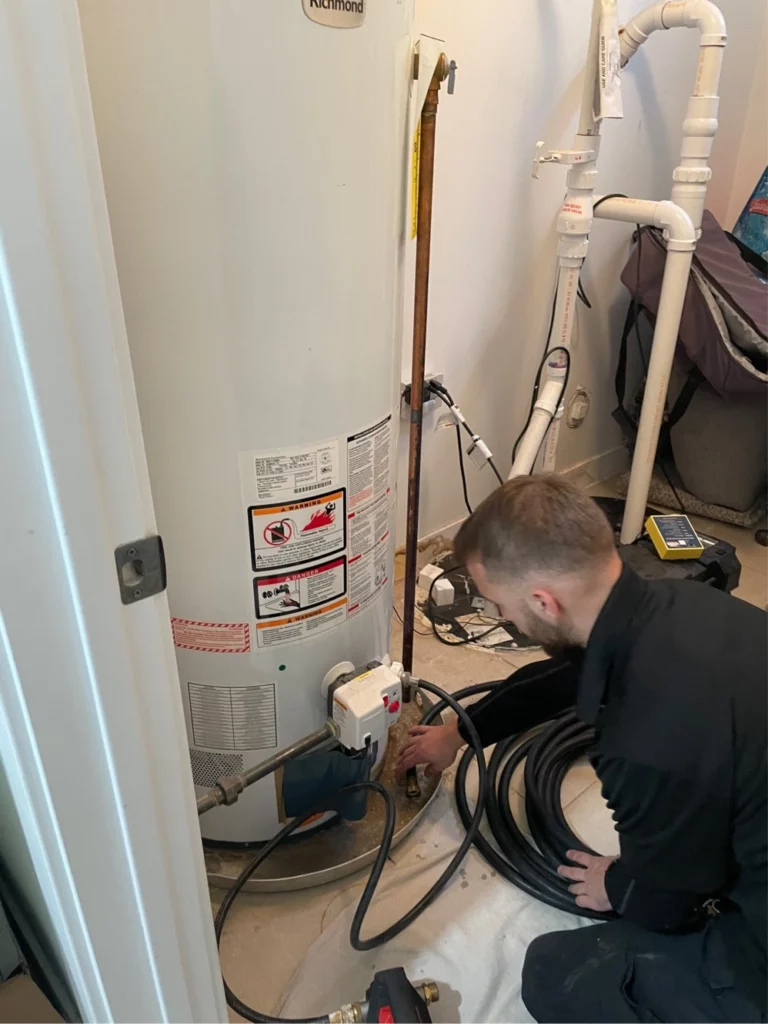Top Water Heater Installation Considerations for Every Homeowner
If your water heater has ignited its last flame and needs to be replaced or you’re looking to upgrade your heater to a more energy-efficient model, our guide is here to help. With our insights and tips, you’ll be able to tackle this project like a pro and avoid any major mishaps.
In this blog, we’ll walk you through everything you need to know—from crucial pre-installation preparations to adhering to the latest energy standards and ensuring compliance with local codes.
We aim to simplify the installation process, offering you practical tips and highlighting common mistakes to avoid. So, let’s dive in and help you install your water heater with confidence and ease.
Key Takeaways
- New efficiency standards and technology advancements require homeowners to adapt to larger, more eco-friendly water heaters, making the installation process more complex and sometimes leading to a mini-renovation project.
- Pre-installation considerations are critical, including understanding space requirements due to increased unit size, assessing your plumbing system for compatibility, and being aware of updated safety and plumbing codes.
- Selecting the right water heater involves evaluating type, capacity, and energy efficiency, and choosing a reliable supplier, such as Bradford White, that offers quality products and installation support.
Understanding the New Water Heater Landscape
The new water heater efficiency standards are reshaping the water heater installation scene. The U.S. Department of Energy (DOE) has added proposals that could revolutionize the way we think about heating our water.
With these advancements, a new water heater isn’t just a purchase—it’s an investment in your home’s energy efficiency. The days of ‘one-size-fits-all’ are behind us, and the new heater you’re eyeing may not slide into place as effortlessly as the old one.
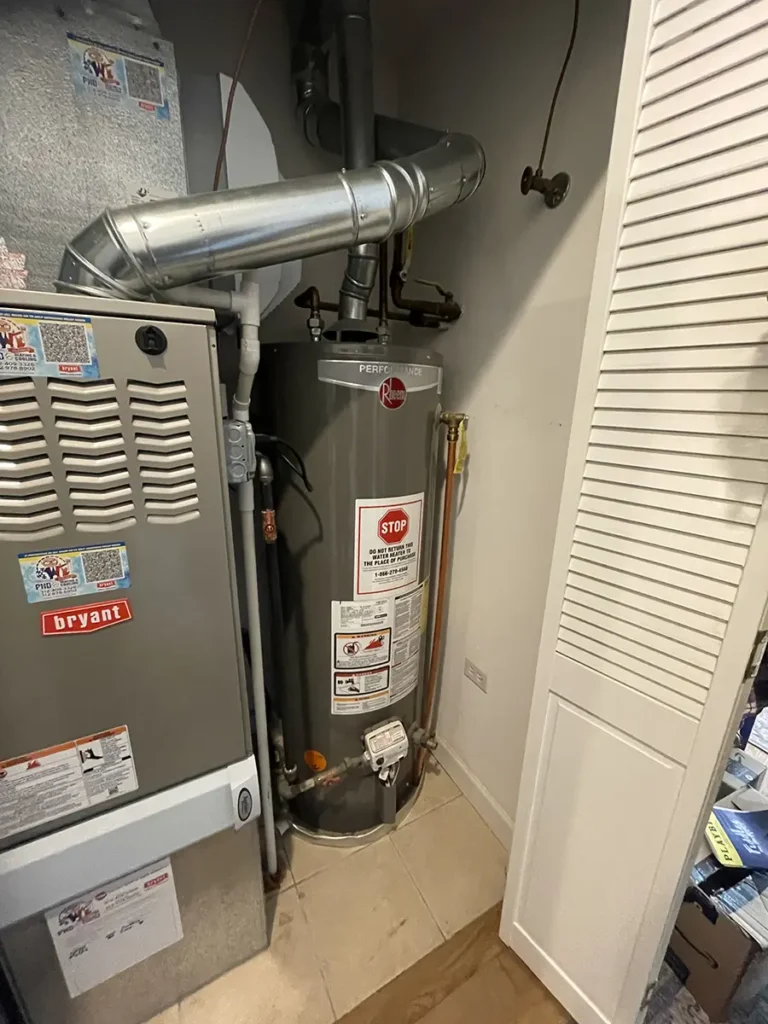
With a little knowledge about the evolving landscape, you’ll be equipped to make informed decisions that will keep your hot water faucet and taps flowing with that precious new hot water, even when considering a water heater replacement.
Why Space Matters More Than Ever
Let’s explore why space has become a crucial element in water heater installations. Remember the good old days when you could swap out your water heater without a second thought about the fit? Well, those days are gone.
With the new federal mandates, new water heaters have bulked up with extra insulation, making them larger than older models.
Although this doesn’t sound like a big deal, it’s not a minor modification. These new water heaters demand more space and could have you scrambling for a tape measure, possibly even a sledgehammer.
Going the extra mile to measure and plan for these larger units is now a top priority if you want to avoid a game of Tetris with your pipes and walls. Think of it this way: a little legwork now can save you a bundle of money and headaches later.
The Size Dilemma: Why Your New Heater Won’t Fit
If you’re wondering why size really does matter in the world of water heaters, let’s rewind to 2010. The Obama Administration’s Department of Energy laid down new standards that, while aimed at reducing consumer fuel costs and energy usage, also left installers scratching their heads.
With these bulkier, better-insulated water heaters, what does this mean for your cozy condo or compact basement? It might mean rethinking your water heater choice altogether, especially if your new unit won’t squeeze into the old spot.
The size increase isn’t just a few millimeters we’re talking about; we’re dealing with inches that can make or break an installation. This can lead to extensive pipework alterations, especially in Chicagoland areas where atmospheric-vented water heaters reign supreme.
If you decide to switch to condensing-type heaters, you’ll need to make changes to the venting and drainage systems to fit them in your small space. So, keep in mind a new water heater might not just be a replacement; it could be the start of a mini-renovation project.
Navigating the Installation Process
Installing a water heater is like starting a new project—you need a plan, tools, and the right equipment. Before you begin, let’s discuss the important steps.
From consulting the manual for safe disconnection of your old heater during the water heater replacement to updating your electrical system for the new unit, each step is a milestone towards a successful electric or gas water heater installation.
If you’re thinking of installing a gas water heater but need a gas line installed, it’s important to consult professional help to avoid any dangerous mishaps.
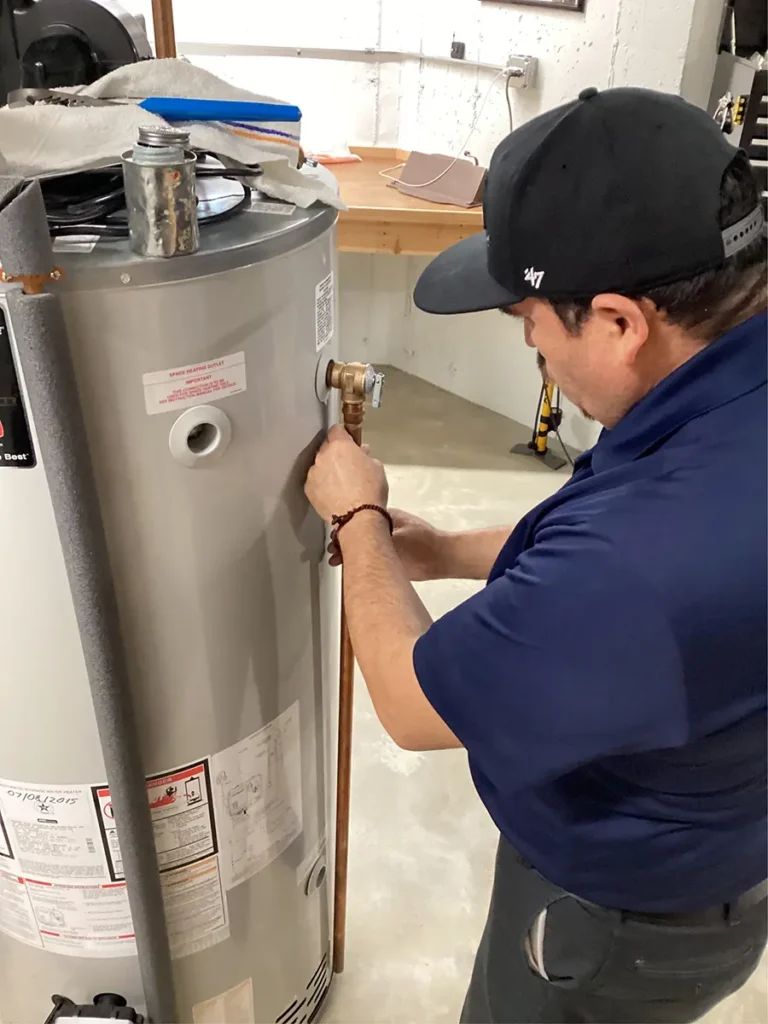
The installation process goes beyond simply connecting pipes and plugging things in. It involves making sure everything meets standards, from ventilation to labor costs. Investing in quality components now can save you from leaks and malfunctions later.
Along with this, you must follow local building codes, which may mandate permits and inspections to confirm your new setup meets all requirements. A flawless heater installation is built on the cornerstones of safety, expertise, and the appropriate tools.
Essential Pre-Installation Checks
For homeowners who are about to begin this installation process, one of the most crucial steps is ensuring the existing unit is properly sized for the home’s plumbing system. The key to a harmonious relationship with your new heater begins with ensuring it’s the right fit for your plumbing system.
Proper sizing guarantees that the household will have a sufficient hot water supply without overworking the system. Here’s a simple guideline to help you determine the right size for a residential water heater:
- One Bath House or Condo Unit with a Kitchen: A 40-gallon water heater is typically sufficient.
- Regular Two Bath House with a Kitchen: You will need a 50-gallon water heater.
- Three-Bath House with a Fancy Carwash Shower and a Kitchen: Install a 75-gallon water heater.
While these sizes provide a general starting point, they are not entirely accurate for every situation. Proper sizing should ideally involve calculating the water fixture units, velocity of water, and flow rate—topics we’ll explore in more detail in a future post. For now, these guidelines should help novices get started with water heater installations.
Another important aspect to consider is whether the home’s plumbing has passed an official inspection. Typically, homes must pass a plumbing inspection when they are first built, ensuring the water heater is appropriately sized. However, be cautious of DIY installations.
In some cases, homeowners might have installed plumbing systems without professional inspections, often resulting in water heaters that are too small. This is usually a cost-saving measure but can lead to inadequate hot water supply and strain on the system.
Ensuring the proper size and code compliance of the water heater not only improves efficiency but also extends the lifespan of the unit, providing a more reliable hot water supply for the household.
Understanding Water Heater Specifications
Imagine you’re at a water heater showroom, and you’re presented with a lineup of potential candidates. How do you spot the one that’s right for you? You start by playing matchmaker with the power, water capacity, and size. BTUs, short for British Thermal Units, and gallons are key details that should match your home’s needs.
With your ideal specs in mind, the next step is consulting the spec sheet, your most reliable informant. It reveals all the dimensions of the water heater, including the critical floor to exhaust connection.
Bradford White Residential Atmospheric Water Heater Models and Sizes
Having your spec sheet ready ensures a level of safety knowing the exhaust system is properly pitched to avoid any hazardous backdrafts.
If you’re preparing for an electric water heater installation, remember that proper wiring and connections are key to preventing fires and electrocution.
Practical Tips for Electric or Gas Water Heater Installation
The day of installation is here, signaling the moment to prepare to heat up your cold water supply and commence work. But before you do, let’s talk about some practical tips that can turn a potentially bumpy installation into a smooth ride. Handling your old water heater with care is the first step.
Whether it’s wrestling it out of a tight spot or finding a new home for it, knowing what to do with your old tank is crucial. And if you’re dealing with a gas water heater, ensuring adequate ventilation is a life-saving piece of advice.
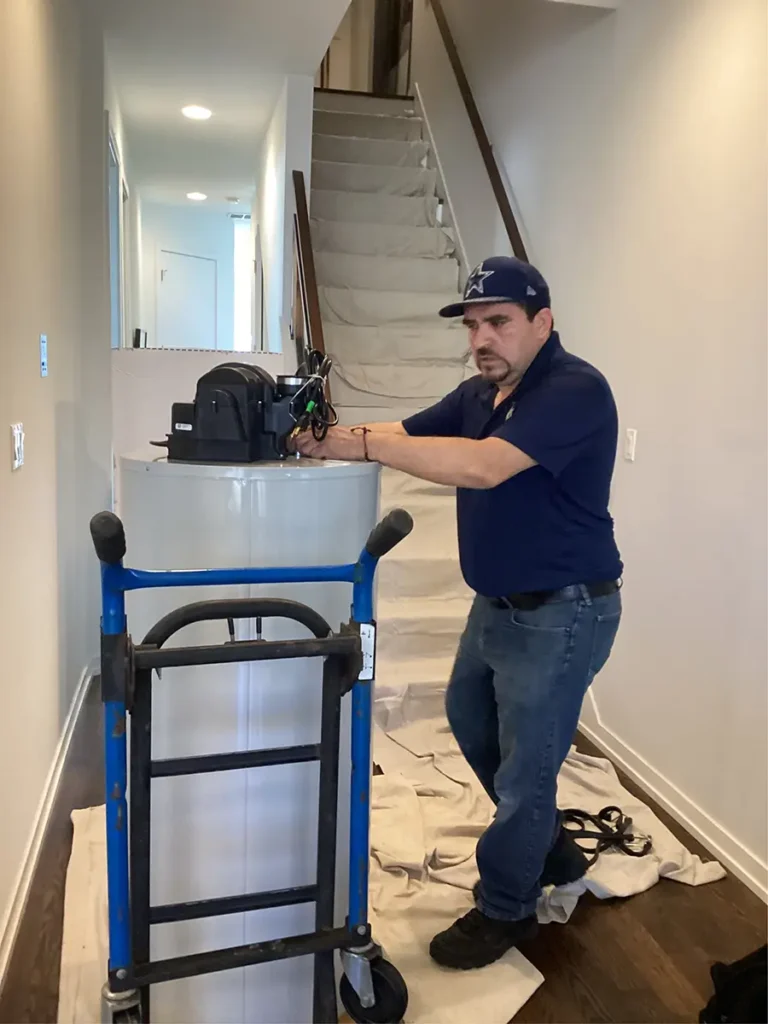
From using a dolly to maneuver the old heater out to ensuring proper venting for the new one, these steps are key for a smooth installation.
The right tools are essential for removing the old water heater and installing the new one. Along with safety gear like gloves and eye protection, here is a list of tools you’ll need:
- Pipe cutter: cuts out old pipes.
- Sawzall: a cordless hand drill with a quarter-inch nut driver bit to remove the flu piping.
- Pipe Wrench: used to install dielectric unions.
- Milwaukee ProPress Tool: crimp copper without soldering the pipes. Using this tool is safer due to hazardous welding fumes!
- Cleaning supplies: a mini broom and dustpan are also necessary.
Before you start this important task, be sure to equip yourself with the knowledge and tools needed to make your water heater installation a success story, not a stressful one.
Handling the Old Water Heater
Wave goodbye to your old water heater, but do so responsibly. Removing it is one thing, but deciding its fate is another. Have you mapped out the exit path, or will your old bulky heater be an obstacle? Make sure you have that tape measure handy to ensure a clear exit strategy. And don’t forget about your local scrap metal hero—they might just come to your rescue, helping you haul away the old tank while contributing to the environment.
But if you’re not one to keep a scrap collector on speed dial, there are other avenues to consider. Here are some options for disposing of your old water heater:
- Recycling centers
- Take-back programs
- Charitable donations
- Online marketplaces
Whether it’s for a few extra bucks or just to clear some space, the disposal of your old water heater should be as well thought out as the installation of the new one, including the proper handling of the drain valve.
Ensuring Adequate Ventilation for Gas Heaters
In the case of gas water heaters, the significance of adequate ventilation and a properly functioning gas control valve cannot be emphasized enough. Without proper ventilation, they’ll simply refuse to work, leaving you out in the cold, literally. And in confined spaces, the stakes are even higher.
Gas water heaters can emit carbon monoxide, a silent but deadly byproduct of poor ventilation and inadequate gas supply, and it’s not something to take lightly.
Whether you’re installing an atmospheric-vented water heater or a power-vented unit, the most common types of gas water heater, the same rules apply. Consider the space, the size of the vent openings, and the layout of your flue piping. And if you’re in a tricky spot like a basement without a chimney, you’ll need to be especially vigilant about vent pipe sizing and installation.
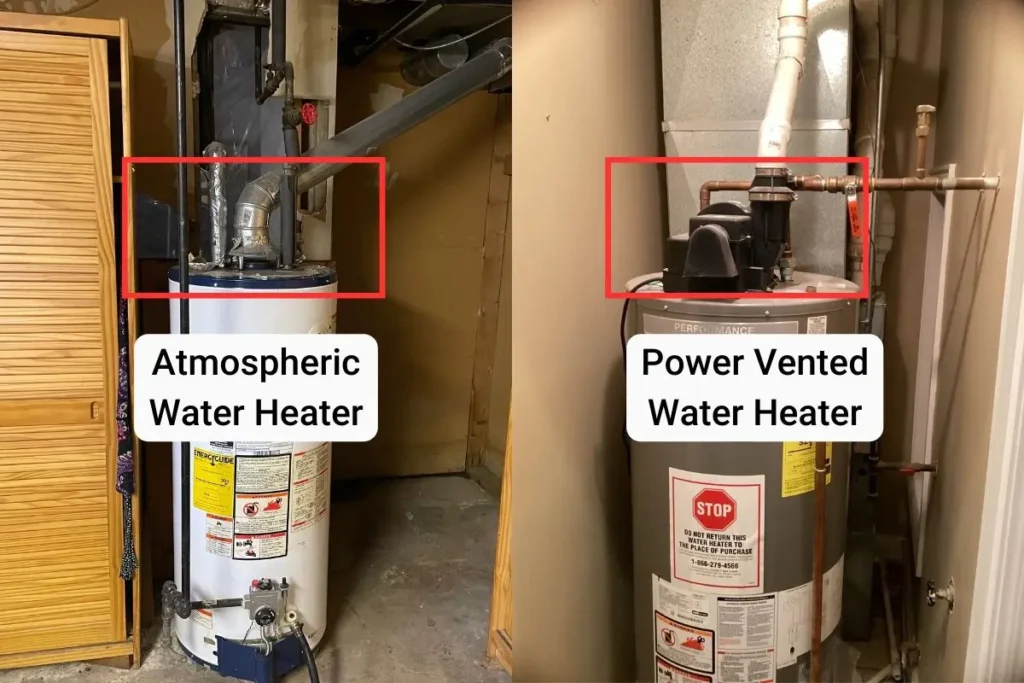
The goal is to keep those exhaust gases moving safely out of your home, preventing any chance of them overstaying their welcome.
Special Considerations for Different Heater Types
Other than the size and space, the type of water heater you choose brings its own set of installation considerations. Here are some options to consider:
- Solar heaters: These harness the sun’s power to heat water.
- Point-of-use heaters: These are ideal for isolated hot water needs.
- Hybrid heaters: These draw heat from alternative fuel to provide energy-efficient heating.
- Tank water heaters: These require ample space and a strong support system due to their considerable size.
- Tankless heaters: These are the compact answer to limited space scenarios, heating water on the fly and tucking it away neatly.
Other than their various shapes and sizes, each type of water heater presents a unique challenge during installation. Whether you’re considering a combination boiler water heater or an eco-friendly condensing water heater, it’s crucial to understand the unique requirements of each option and choose a system that integrates seamlessly with your home’s existing infrastructure.
Tankless Water Heaters: Pros and Cons
The allure of tankless water heaters is undeniable. Imagine endless hot water and a reduced footprint in your utility closet—what’s not to love? But, as with any good story, there’s always another side.
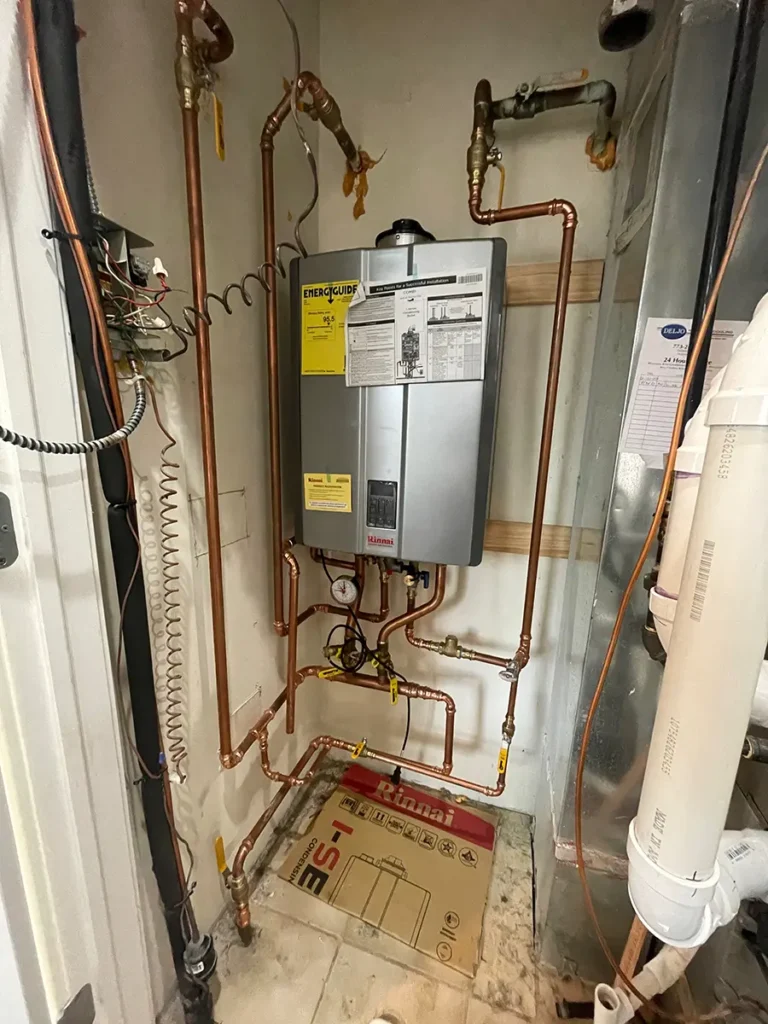
A tankless water heater is like a 40-gallon tank, which may not be enough for larger homes needing more hot water. Don’t expect one tankless unit to replace a 50-gallon unit without losing performance.
While the energy efficiency and space-saving design of tankless water heaters are appealing, it’s essential to weigh these pros against the potential need for multiple units to meet your hot water needs.
The cost might climb, and the installation could become more involved, but for those with the right setup, tankless might just be the key to hot water heaven.
Electric Water Heaters
For those leaning towards an electric water heater, there’s a golden rule to follow: never power on until the tank is full of water. It’s a simple step, but one that can mean the difference between a functional heater and a fried one. Filling the tank is not just a precaution but a safeguard against damaging the heating elements.
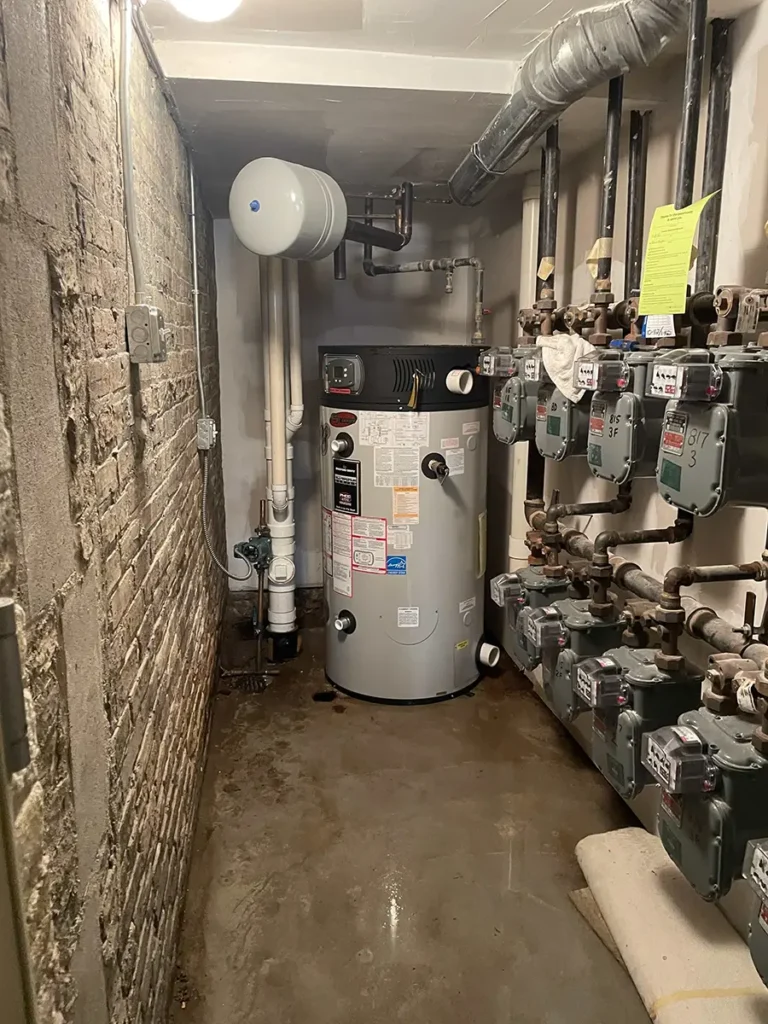
But the electric water heater journey doesn’t end there. Beyond the initial fill, these heaters demand meticulous attention to detail when it comes to wiring and connectivity. A misstep in the electrical department can lead to a lack of hot water and even lead to safety hazards that no homeowner wants to face.
To fill the tank for your electric water heater installation, here is a step-by-step guide to ensure your safety:
- Turn Off the Power: Before starting, make sure the power to the water heater is turned off at the circuit breaker. This is important for safety reasons.
- Open Temperature Relief Valve: Before filling the tank with cold water, open the mop sink faucet or the temperature relief valve to let air escape and prevent banging pipes.
- Close the Drain Valve: Ensure the drain valve at the bottom of the water heater is closed. This valve is used for draining the tank, not for filling it.
- Open the Cold Water Supply Valve: Locate the cold water supply valve, which is usually near the top of the water heater, and open it. This allows cold water to start filling the tank.
- Monitor the Filling Process: As the tank fills, you’ll hear water flowing and possibly some gurgling noises. This is normal and indicates that air is being pushed out of the tank through the open faucet. Run the hot water for 5 minutes until the faucet runs smoothly without air.
- Check for Water Flow: Once a steady stream of water is flowing from the open hot water faucet, it means the tank is full. At this point, you can close the faucet.
- Check for Leaks: Inspect the water heater and the connected pipes for any leaks. If you find any, tighten the connections as necessary.
- Restore Power: Once you’re sure there are no leaks and the tank is full, you can turn the power back on at the circuit.
- Open a Hot Water Faucet: Open the hot water faucet closest to the water heater. This helps to allow air to escape as the tank fills with water.
If the thought of installing your electric water heater feels overwhelming, Rescue Plumbing is just a call away. Our experienced team can handle the entire water heater installation and repair process efficiently, ensuring you have hot water running in no time.
Recent Plumbing Code Updates
Keeping up with plumbing codes is essential, not just for professionals but for anyone planning to install a water heater. The 2024 International Plumbing Code (IPC) and International Mechanical Code (IMC) have undergone significant formatting changes, marking a new chapter in plumbing and mechanical standards.
With updated provisions for plumbing fixtures and accessibility requirements, these codes are setting new benchmarks for installations. Whether it’s adapting to new soil pipe conditions support provisions or wrapping your head around the latest fixture requirements for different occupancies, understanding these updates is key to a compliant and safe water heater install.
With new standards, these codes are guiding us toward a future where safety and environmental responsibility go hand in hand.
Expansion Tanks and Pipe Insulation
As we dive deeper into the recent plumbing code updates, two elements stand out: expansion tanks and pipe insulation. Having this required expansion tank on the cold side of the water heater helps manage the expansion of heated water and reduces stress on your pipes. Think of it as a pressure relief system.
A relief valve also ensures your water heater runs safely as it only activates if the water heater malfunctions and the temperature exceeds 210°F. Its primary function is to prevent the water heater from exploding if it gets too hot.
Along with expansion tanks, insulating your hot water pipes and cold water lines is no longer optional—it’s a mandate. With the threat of freezing pipes becoming more common thanks to Chicago’s classic polar vortex weather, insulation is your first defense against an unexpected cold snap.
By wrapping those pipes, you’re not only complying with the new code but also helping to maintain a consistent water supply temperature and prevent heat loss.
It’s essential to keep up with these regulations and make sure your installation is up to code. After all, safety should be a top priority when it comes to plumbing.
Choosing the Right Water Heater and Supplier
Choosing a new water heater involves many decisions, especially picking the right water heater and supplier. However, it’s not about picking the prettiest model or the one with the most bells and whistles. You need to consider the system’s capacity and energy efficiency to ensure it meets your family’s needs.
The type of water heater—whether it’s conventional storage, tankless, heat pump, solar, or tankless coil—is also a critical decision, as each comes with its own set of benefits and requirements.
The choice of fuel or energy source greatly impacts your annual operating costs, the size of the water heater, and its energy efficiency. Availability and cost of fuel types in your area can make or break your decision, especially if you’re building a new home or switching from one energy source to another.
By comparing fuel costs and understanding the long-term implications of your choice, you can save money while ensuring your new water heater perfectly suits your home and lifestyle.
Why We Trust Bradford White
In the realm of water heaters, trust is essential, and there’s a reason why we confide in Bradford White. As installers looking for quality and reliability, we’ve found a partner in this manufacturer that ticks all the boxes. Bradford White Water Heaters, assembled in the heartland of Michigan, represents a brand that commits to quality and exceptional service.
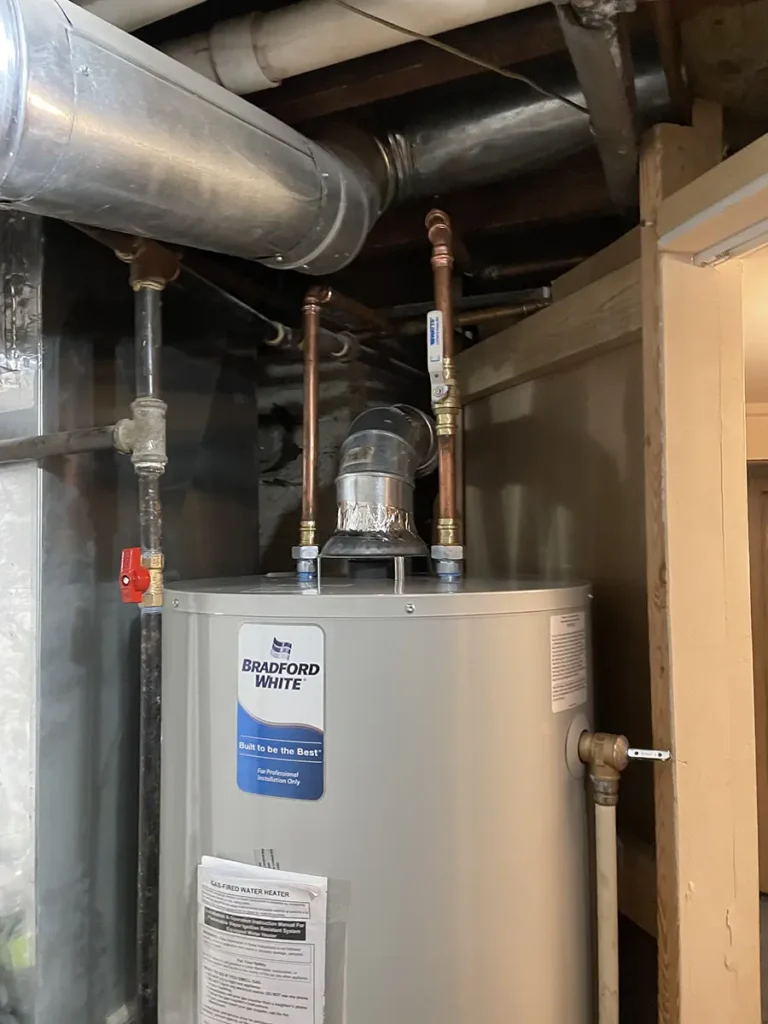
Our trust in Bradford White extends beyond the assembly line. Their dedication to training and support ensures we’re never left stranded during unexpected issues in an installation. With a supplier like Ferguson Plumbing Supply standing behind us, we’re confident in every water heater installation we undertake.
So, when we recommend Bradford White, it’s not just a suggestion—it’s a reflection of our own experiences and the satisfaction we’ve seen in homes just like yours.
Summary
The landscape of water heaters and the way we approach installation is changing. Space considerations, updated plumbing codes, and the switch to more efficient technologies are reshaping our choices and methods. Whether you opt for a traditional tank, go tankless, or explore electric options, the path to a successful installation is paved with knowledge, preparation, and the right partnerships.
So take these insights and step confidently into the warm embrace of your new water heater. With the right information, a clear understanding of recent code updates, and a trusted supplier like Bradford White, you’re well-equipped to make the best choice for your home. Go forth, and let the steady flow of hot water be a testament to your hard work and careful planning.
If you ever need help with your water heater installation process, schedule service with Rescue Plumbing today at 773-799-8848 for a free on-site verbal estimate. We’ll help you navigate the sea of options and make sure you have a smooth and successful installation experience. Trust our experts at Rescue Plumbing for all your plumbing needs.


